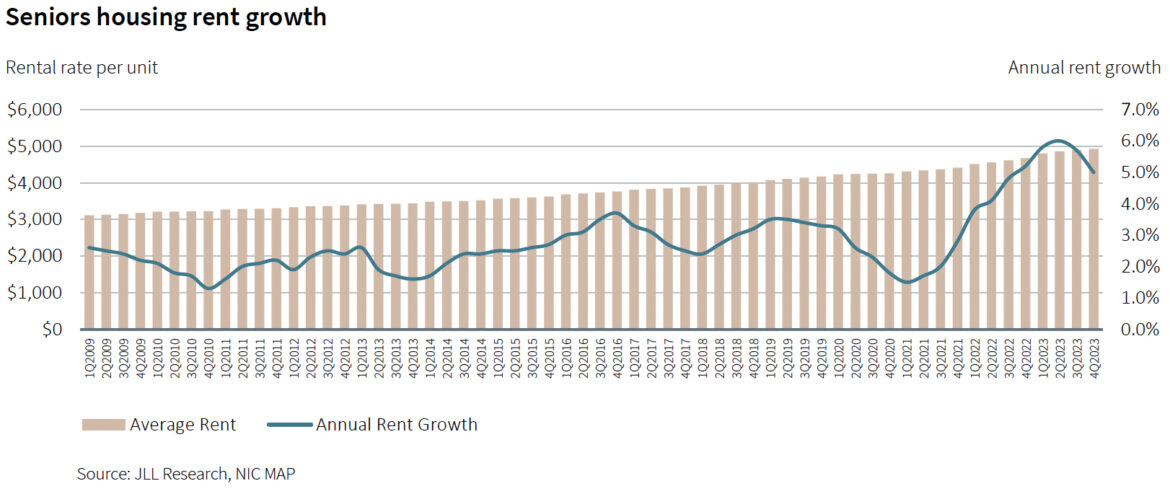CHICAGO — Green shoots are starting to emerge in the capital markets, benefiting the seniors housing sector of the industry. The underlying market fundamentals continue to bounce back from the lows experienced during the COVID-19 pandemic with occupancy increasing, construction starts slowing and the market showing signs of stabilization and growth, according to JLL’s seventh annual Seniors Housing and Care Investor Survey and Trends Outlook.
Of the investors surveyed for the report, 63 percent of respondents indicated they would increase their investment exposure to seniors housing in 2024, which is up 1,900 basis points from 2023. When asked where the biggest opportunity in the sector lies, 41 percent will focus on the assisted living segment of the industry, up 1,000 basis points from 2023, followed by independent living and active adult communities.
Key themes addressed in the report include:
Occupancy Rebound: Occupancy rates have notably increased in both primary and secondary markets, with an average rate rising six percentage points to 86.3 percent in fourth-quarter 2023 since the market’s low point in first-quarter 2021.
Investor Confidence: Despite a general slowdown in transaction volumes due to higher financing costs and market uncertainty, investor interest in seniors housing remains strong. This is partly due to positive demographic prospects and the attraction of higher yields from seniors housing and other alternative asset classes.
Capitalization Rates: Capitalization rates for seniors housing have expanded by approximately 200 basis points from the market peak before the Fed started raising interest rates.
Construction and Demand: The report highlights a slowdown in inventory growth, with construction starts halving compared to pre-pandemic levels. This reduction supports the performance of existing properties, further supported by the aging baby boomer generation.
Private Capital Engagement: Private buyers have become more dominant in the seniors housing assets market, stepping up as institutional liquidity has seen a downtrend. In 2023, private buyers comprised 85 percent of the buyer composition, up 11 percentage points year-over-year and marking the highest share in recent cycles.
Market Diversity: While there is an overall positive trajectory across the board, recovery levels and performance vary across locales, with seniors housing fundamentals in markets like San Antonio and Phoenix showing full recovery, and others, such as the Bay Area and Chicago, still trailing.
“The seniors housing and care industry is on a striking path of growth, driven by demographic changes, strategic investment opportunities and a marketplace that continues to adapt post-pandemic,” says Bryan Lockard, executive managing director and head of healthcare a alternative real estate at JLL Value and Risk Advisory. “We are witnessing a conscientious investment community, keen on harnessing the long-term potential this sector promises.”To download the full survey report, click here.

